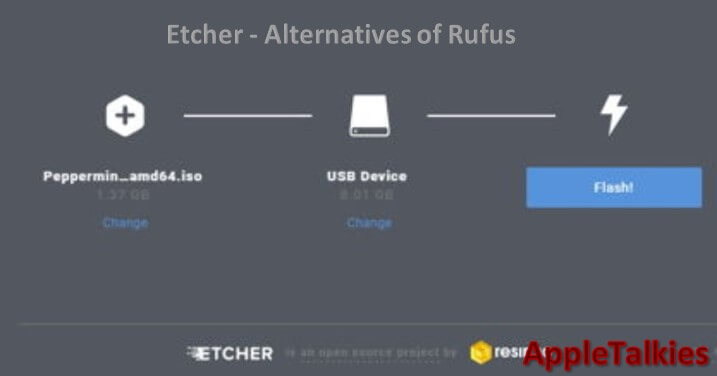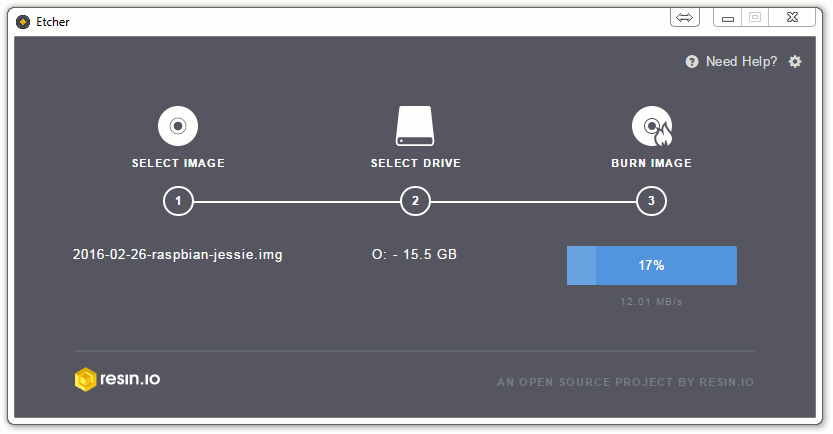
#ETCHER FOR MAC INSTALL#
Although it comes free with Windows, there are several third party tools that allow users to install etcher to work with Linux, Apple Mac and even UNIX-like operating systems.
#ETCHER FOR MAC SOFTWARE#
The Etcher software is designed to work with Windows only.

The tool works by reading a series of configuration parameters that describe the device, such as the size of the device and whether it's bootable. Etcher can be used for creating bootable USB sticks, CDs, pens and many other items as well. This is particularly useful for those who don't know much about computers or their hardware - like students or people on the move. If you want to flash another SD card with the same image, insert it and click Use Same Image.Etcher is a very useful tool for creating bootable Windows OS images from a DVD or other image files. When done, remove the SD card, insert it into your Raspberry Pi, and power it up. STEP-06 Writing the imageĮtcher will format the SD card, before writing and verifying the image this is shown by a progress bar. Now click Flash! to write the image file to the SD card. Etcher won’t write to your hard drives by default, but check that the SD card is listed correctly. STEP-05 Insert your SD cardĪttach your SD card to the computer. The image will appear under Select Image, and Connect a drive will highlight red. Use the file manager window and locate the image you unzipped in the previous step.

STEP-04 Select the imageĬlick Select Image in Etcher. Etcher can install directly from a ZIP file, but the process takes a lot longer. In Windows, right-click the file and choose Extract All. Double-click the file in Mac or Linux (or use unzip in a terminal window). Etcher-linux-圆4.AppImage STEP-03 Download your OS imageĭownload a copy of the latest Raspbian image from the Downloads page (or the OS image you want to install). Open a terminal window and enter: cd Downloads STEP-02 Install on Linuxĭownload the AppImage file from the Etcher website. In Windows, run Etcher in Administrator Mode: right-click on Etcher and choose ‘Run as administrator’. Drag the Etcher app to your Applications folder on a Mac and double-click to open it.
#ETCHER FOR MAC .EXE#
exe file in Windows and follow the Etcher setup wizard. STEP-01 Install in Windows or Macĭownload and install Etcher from the website. Follow these steps for hassle-free SD card flashing. We like Etcher so much, we thought we’d create this guide to installing and using it. Unsafe Mode is handy if you want to flash a USB thumb drive or other internal drive, but it’s disabled by default, making the process safer for newcomers. Etcher won’t write to your hard drive volumes unless you check Unsafe Mode in Settings.

More importantly, the same program, with the same interface, is available on all three types of computer – Windows, Mac, and Linux – which makes it easy for everybody to understand.Įtcher takes a lot of the stress out of flashing a drive. Etcher turns the whole process of flashing an OS image file into three simple steps: Select Image, Select Drive, and Flash Image. So we were pleased to come across Etcher. Mac and Linux users typically use the dd command in the terminal, while Windows users require a program such as Win32DiskImager. Get a free Pi Zero W, Official Case, and Accessories with your 12-month subscription to The MagPi. It can be a long-winded process, and is often difficult for newcomers to grasp. Copying operating system (typically Raspbian) image files to a micro SD card is an essential part of getting started with a Raspberry Pi.


 0 kommentar(er)
0 kommentar(er)
